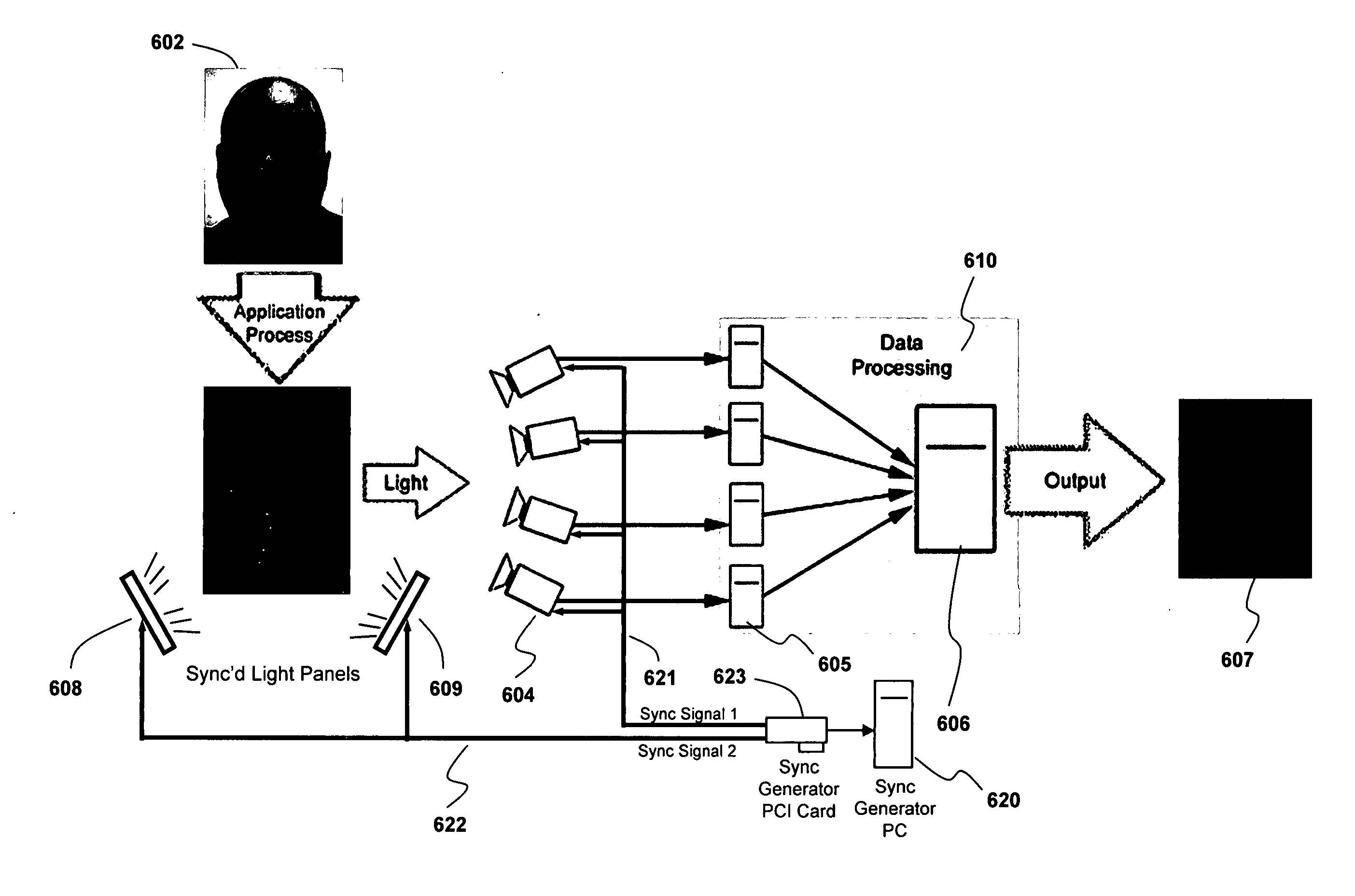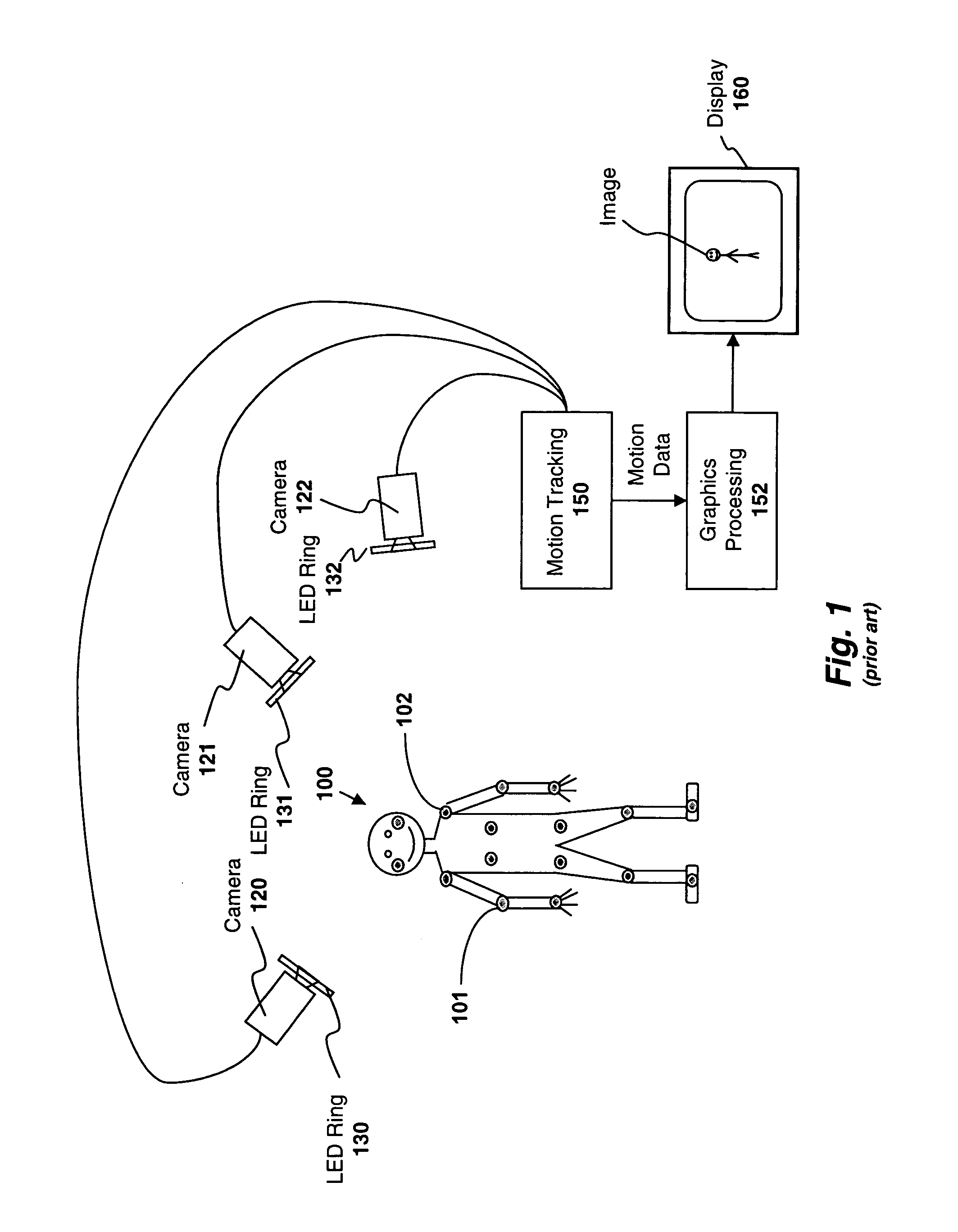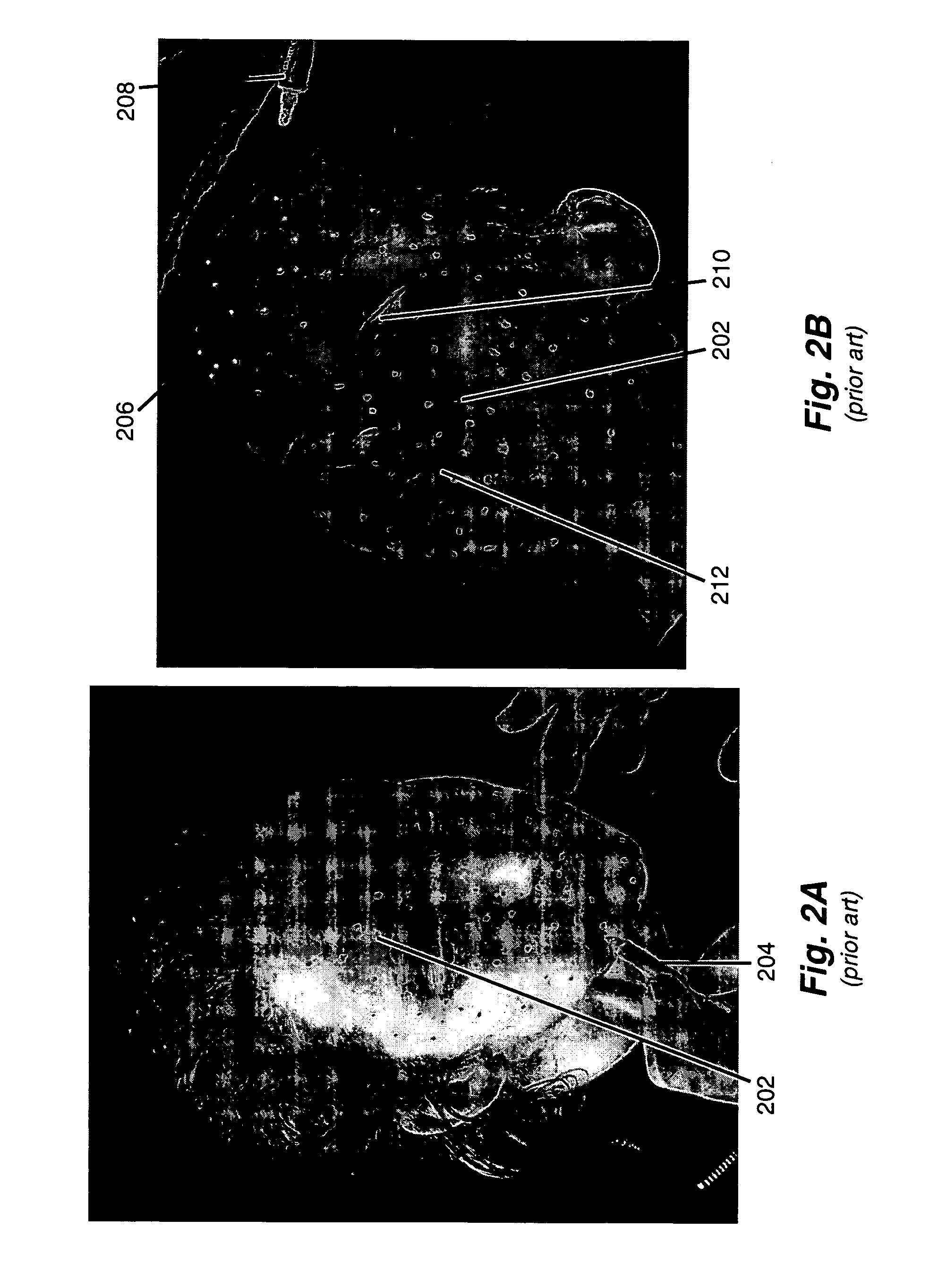Apparatus and method for performing motion capture using a random pattern on capture surfaces
a technology of random pattern and motion capture, applied in the field of motion capture, can solve the problems of inability to re-identify all markers, inability of motion tracking units b>150/b> to lose track of markers, and resolution of image capture limited to the precision of the pattern of markers
- Summary
- Abstract
- Description
- Claims
- Application Information
AI Technical Summary
Problems solved by technology
Method used
Image
Examples
Embodiment Construction
[0051] Described below is an improved apparatus and method for performing motion capture using a random pattern of paint applied to portions of a performer's face and / or body. In the following description, for the purposes of explanation, numerous specific details are set forth in order to provide a thorough understanding of the present invention. It will be apparent, however, to one skilled in the art that the present invention may be practiced without some of these specific details. In other instances, well-known structures and devices are shown in block diagram form to avoid obscuring the underlying principles of the invention.
[0052] The assignee of the present application previously developed a system for performing color-coded motion capture and a system for performing motion capture using a series of reflective curves 300, illustrated generally in FIG. 3 and shown painted on the face of a performer 400 in FIG. 4. These systems are described in the co-pending applications enti...
PUM
 Login to View More
Login to View More Abstract
Description
Claims
Application Information
 Login to View More
Login to View More - R&D
- Intellectual Property
- Life Sciences
- Materials
- Tech Scout
- Unparalleled Data Quality
- Higher Quality Content
- 60% Fewer Hallucinations
Browse by: Latest US Patents, China's latest patents, Technical Efficacy Thesaurus, Application Domain, Technology Topic, Popular Technical Reports.
© 2025 PatSnap. All rights reserved.Legal|Privacy policy|Modern Slavery Act Transparency Statement|Sitemap|About US| Contact US: help@patsnap.com



